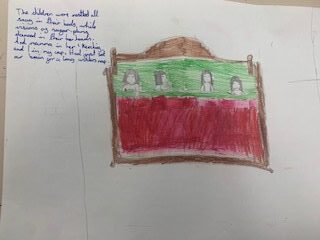Year 2 Arctic Adventures
During the Autumn term we have been looking at the Arctic for our art inspiration. We read the book of Iris and Isaac and drew our own polar bears, inspired by the artist Catherine Raynor. We then made our own polar bear sculptures, using model magic.













We took our inspiration from our book, Iris and Isaac and created our own polar bear landscapes.







During this project we explored water colour techniques, continuous line drawings and learnt about wax resist. As you can see from our Art Exploration books we really embraced all our new skills techniques.
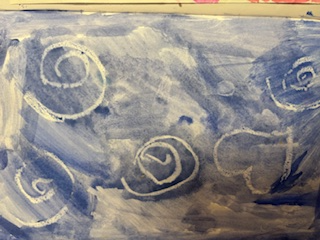
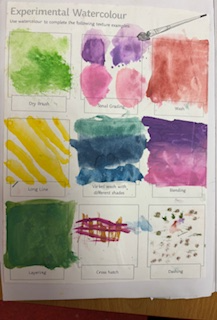

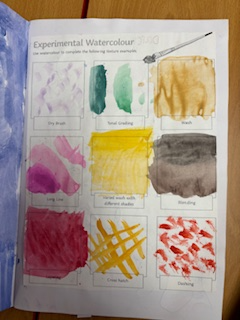




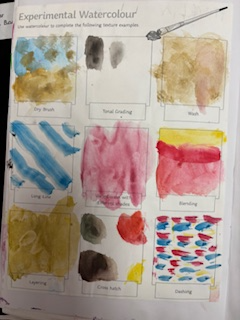

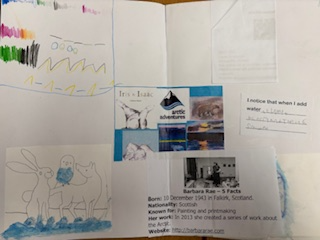
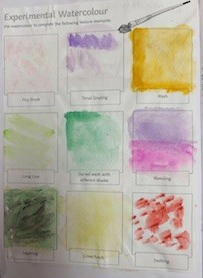
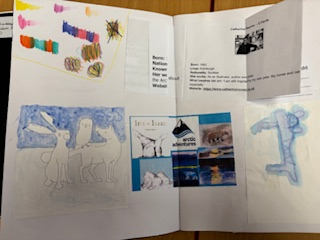



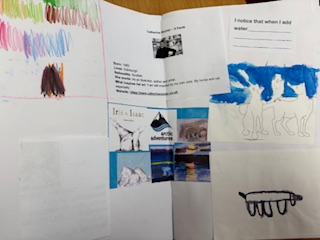
Year 1 The Old Toybox and In November we Remember
Wow! We have really enjoyed learning about toys old and new. We have learnt about Old Bear by Jane Hissey and the Everywhere Bear by Rebecca Cobb.
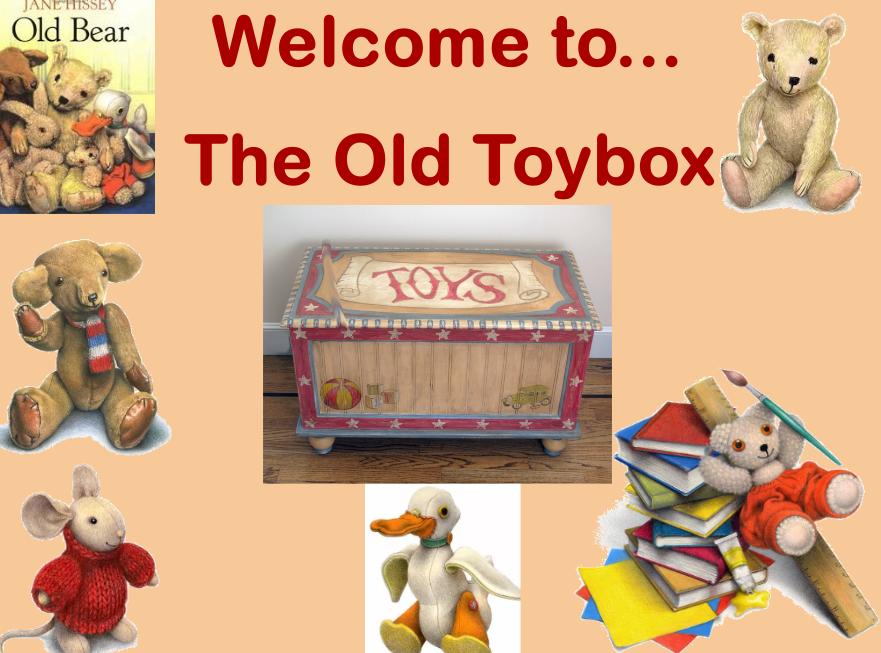


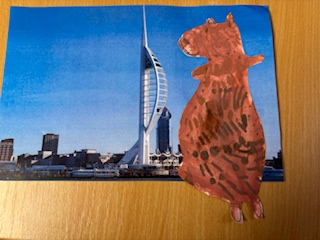
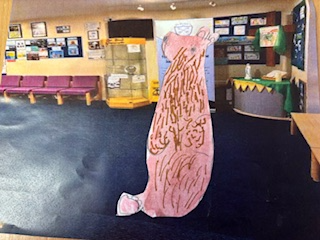
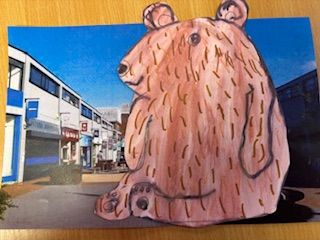
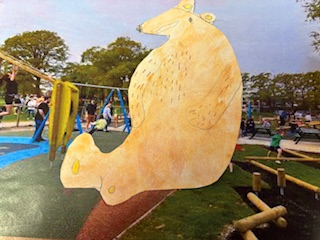
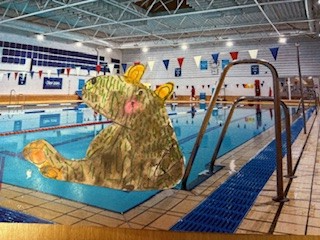
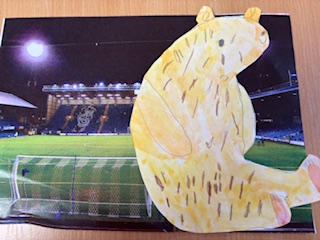
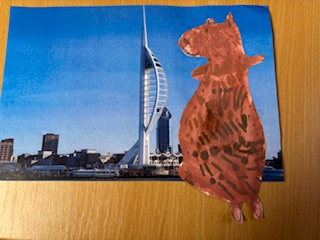
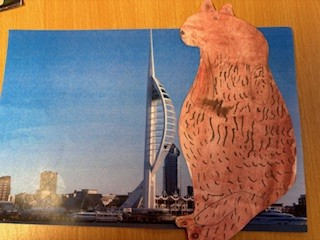

We drew and then painted our own ‘everywhere bear’ and then the bear travelled all around our local area… he even travelled to Fratton Park and the Spinnaker Tower. Did you spot him?
We have learnt about Steiff bears and created our own clay bear heads.

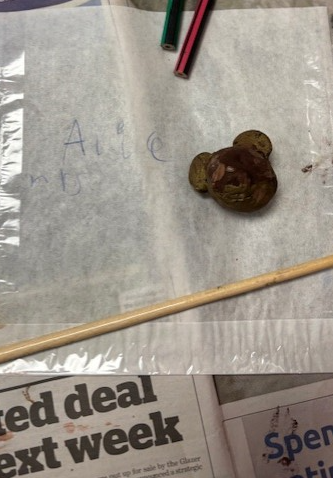

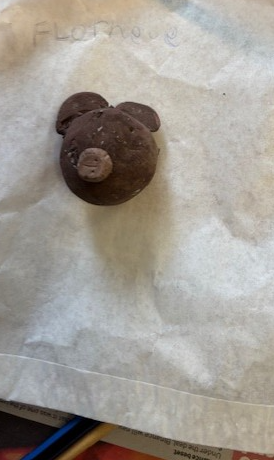




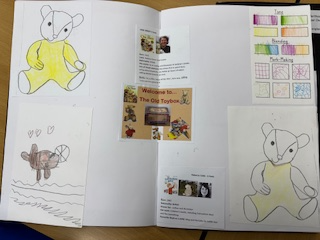





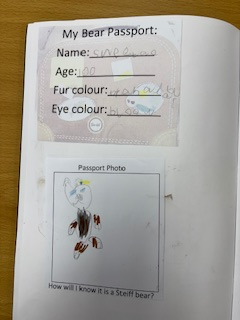

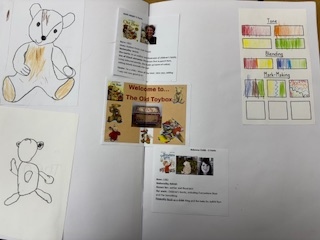
We have made a great start to our art exploration books to share our ideas and learn new skills and techniques.
We took time out from the project to remember people who have sadly died, both in our families and during wars. The children thought about what peace feels like and how the Holy Spirit gives us special gifts called Charisms and we can use these gifts to spread peace throughout our homes, our school and the wider world.





The children represented this by using oil and chalk pastels to colour a poppy and placing it onto a black and white photo of their hands. I’m sure you’ll agree that the imagery is very powerful.













Reception Colourful Me!
We have had such an exciting start to our art journey at St Peter’s. Please look and celebrate all our creative projects.
We looked at the colourful landscapes that the Canadian artist Ted Harrison created. We then decided to create our own Arctic landscapes, inspired by him. After that we drew our polar bears and added them to our landscapes. I think they turned out magnificently…don’t you?








We were exploring colour mixing with paints. We used the primary colours and mixed two together at a time to make secondary colours.



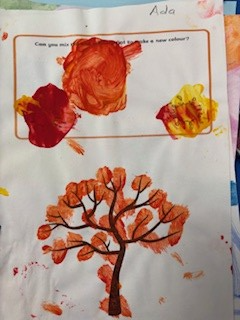
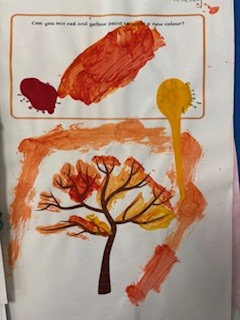

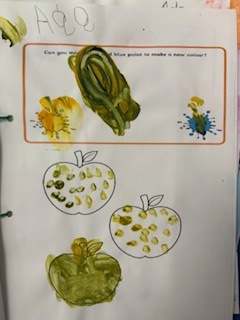


We learnt about the colour monster and created our own, thinking about our thoughts and feelings.
We then chose our favourite things to put into our feelings jar.




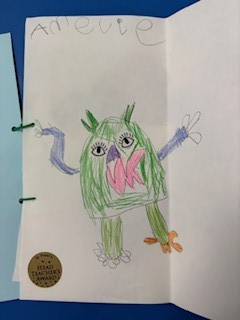


Reception – Mud paintings in the sun!
On Friday we took the children over onto the field to do some painting. What the children didn’t know was that we weren’t going to be using the school paints….we were using MUD, just like the cave paintings from long, long ago.
We mixed mud and water and hey presto we had paint! The children had a wonderful time painting on our large roll of paper and then some individual paintings. The added bonus was the sun was shining!
We hope you like looking through our gallery of paintings.
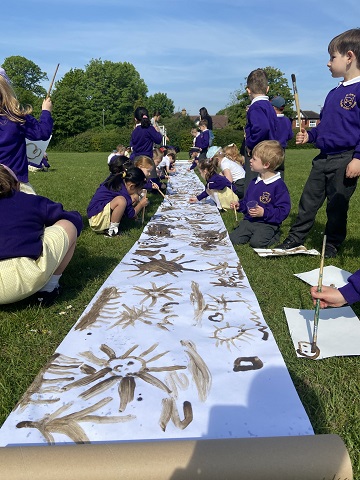
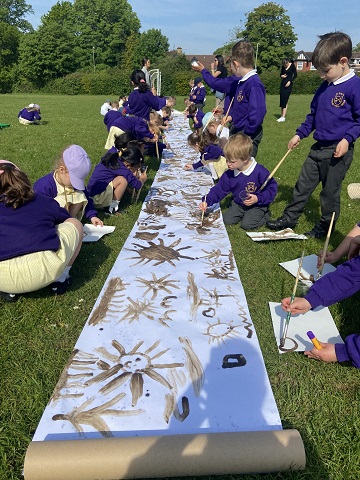
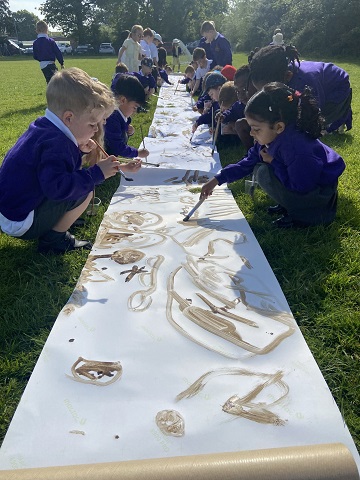
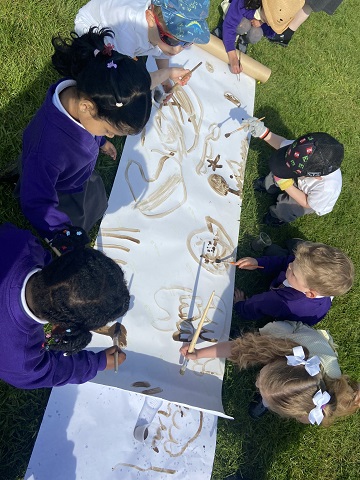
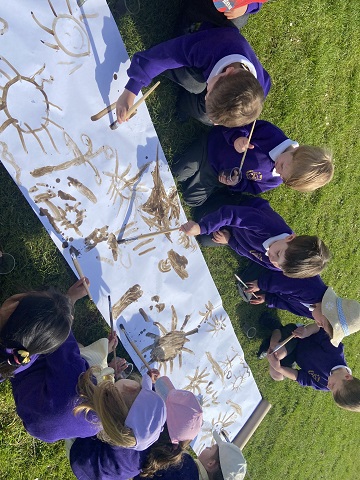
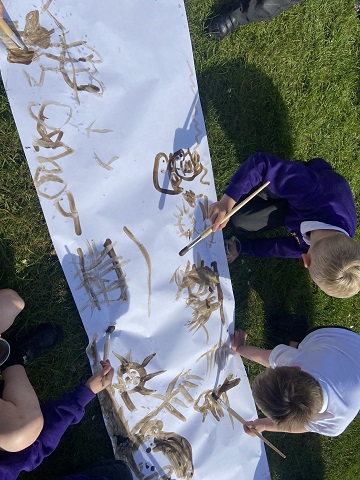
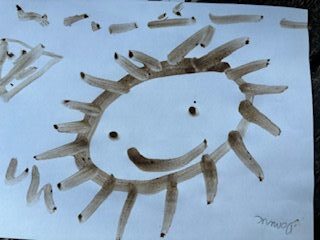
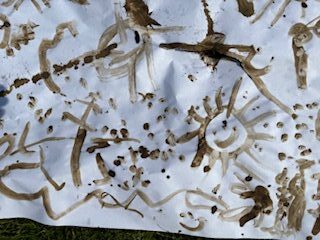
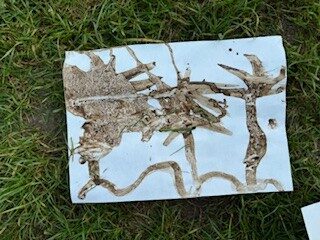
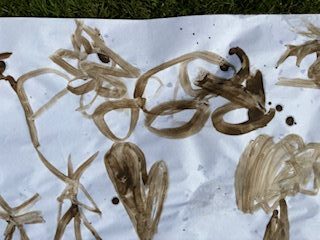
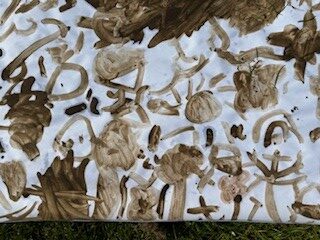
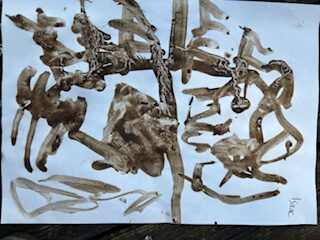
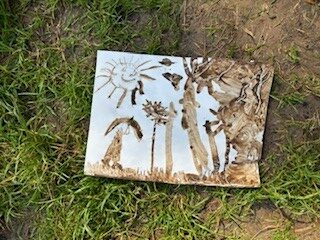
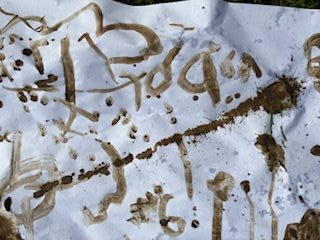
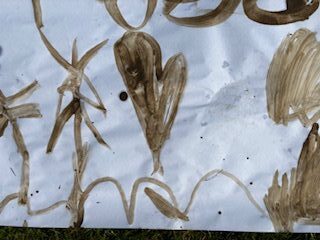
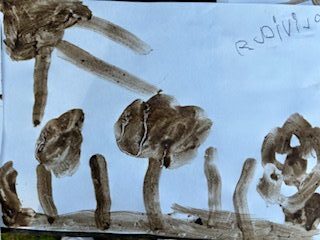
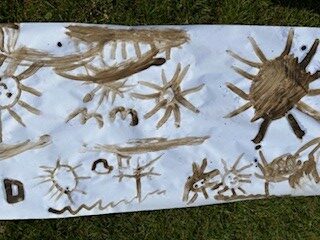
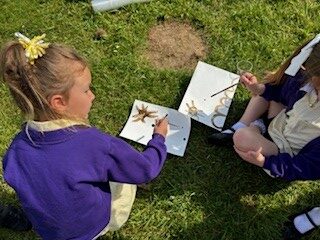
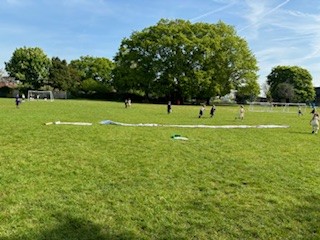
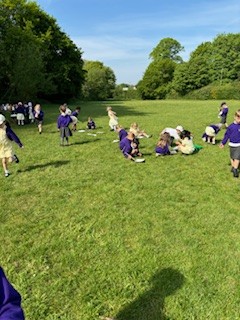
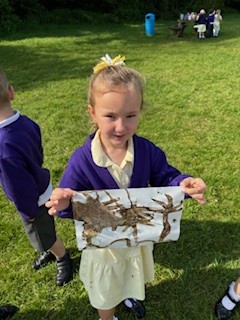
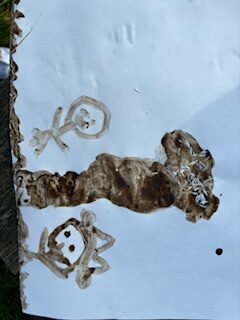
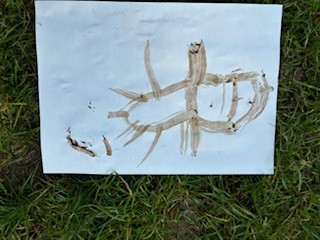
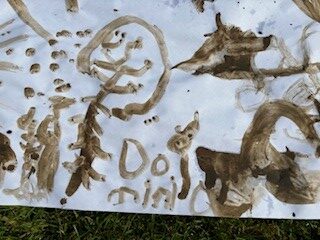
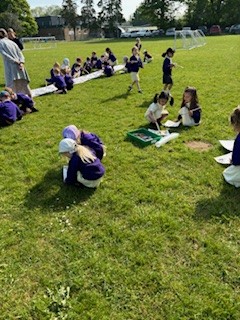
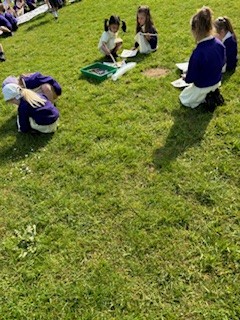
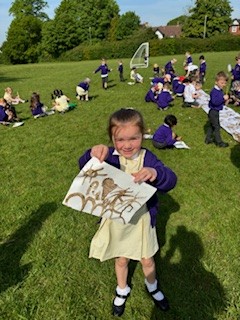
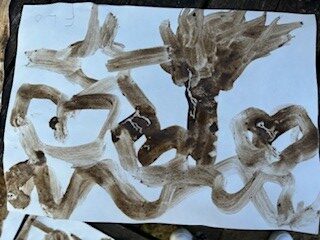
School in Residence – Allen Art Gallery in Alton
Once again, St Peter’s was selected to be the School in Residence at the Allen Gallery in Alton. This programme offered pupils the chance to engage with all aspects of the gallery, including the art studio, over a period of six weeks.
The twelve children from Year 4 & Year 5 visited on a weekly basis to use the studio, explore the exhibitions, and create an Easter project, which was then dispalyed in the gallery at the end of their residency.
Their Easter project consisted of decorated real eggs, in and Eastern Eurpean style, an oil and chalk pastels drawing of decorated eggs and a decoupage spring themed tile. The work was exhibited in the main hall during the Easter weekend, with their real eggs forming the Allen Gallery Easter Egg Trail that ran throughout the Easter holidays.
We do hope you managed to see it in person, if not, here are some photos below.


















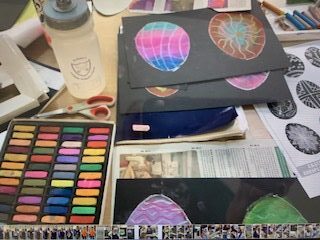




























It was highly successful, and the children benefited immensely from the experience.
He Is Risen by Year 4

Year 4 children have created these stunning pictures, using oil and chalk pastels to celebrate the Resurrection of Jesus












Diversity Fornight Art & P4C
We have had a wonderful fornight with the children engaging in a range of religions and cultures during diversity fortnight. Mrs Conlon started each lesson with a P4C (Philosophy for children) input, which often included a book, before Mrs Pearson added the art element.
Each Year group had the opportunity to work with a partner or independently, but throughout their lesson they were encouraged to discuss the topics that were introduced during the inputs. The children really embraced these lessons, which led to interesting and thought-provokong conversations.
Year 6 JUDAISM – Shalom
Shalom (שלום) is a Hebrew word which means “peace”. Like in English, it can mean the peace between two parts, as well as an inner peace, being calm or the quietness of a person. It is also used as a method of greeting like “hello”, “good day (morning, afternoon, high noon,…)” or “good bye”. The root of the word “shalom” can be related to le-shalem which means “to complete, to reward, to pay, to compensate”. This means that it is more than the absence of conflict or struggle or the breaking of unfriendliness: It also means a return to the balance, to justice, and to the complete equality. The children had the freedom to portray the word SHALOM any way they chose, using their preferred media. Some children worked on their own or in pairs. As you can see, the results were stunning.
















Year 5 SIKHISM – Gurdwara – Dioramas Key words : A gurdwara (in Punjabi: ਗੁਰਦੁਆਰਾ) is a place of assembly and worship for Sikhs. Diorama is a model representing a scene with three-dimensional figures, either in miniature or as a large-scale. Our Year 5 children learnt about the Sikh Festival of Bandi Chhor Divas, which celebrates light overcoming darkness. They then created these stunning Gurdwara dioramas, working either in pairs or individually.











Year 4 ISLAM – SANDALS inspired by the book, Four Feet, Two sandals
About the book: When relief workers bring used clothing to the refugee camp, everyone scrambles to grab whatever they can. Ten-year-old Lina is thrilled when she finds a sandal that fits her foot perfectly, until she sees that another girl has the matching shoe. However, soon Lina and Feroza meet and decide that it is better to share the sandals than for each to wear only one. As the girls go about their routines washing clothes in the river, waiting in long lines for water, and watching for their names to appear on the list to go to America the sandals remind them that friendship is what is most important. Four Feet, Two Sandals was inspired by a refugee girl who asked the authors, Karen Lynn Williams and Khadra Mohammed, why there were no books about children like her. This book portrays the strength, courage, and hope of refugees around the world, whose daily existence is marked by uncertainty and fear.
Our Year 4 children worked in pairs to create an identical pair of sandals. They worked brilliantly together on planning and then making their bespoke sandals.….Then came the dilemma…. Who gets the finished pair of sandals. Did just one child get them? Did they take it in turns? Or, did they have one each, so that they could remember the story and the friend that they made the sandal with? What would you do? As you can see, they have done a fantastic job – so good that I’m tempted to sell some of them on Vinted!
















Year 3 HINDUISM – The Elephant Festival ‘Hastimangala’
We learnt about the Indian elephant festival called Hastimangala, which is held in a northern Indian city called Jaipur. The festival is held on or before the Holi festival, which is the festival of colours. The elephant festival provides ‘caretakers’ with a day to decorate their elephants with their own artistic patterns, colours and features. People compete to have the most beautifully decorated elephant. We explained that this artistic festival is said to be controversial. Some animal activists think it is
cruel to decorate the elephants as it can harm their skin and make them feel uncomfortable. We asked the children some thought-provoking questions, such as: What do you think about this? Do you agree? Or, do you think it is nice to decorate the elephants in an artistic way? The children then had the choice to work on their own or with a partner to decorate their own elephant for our own ‘Hastimangala Festival’. We then stapled the front and the back of the elephant, leaving a small gap at the top, which we then stuffed with cotton wool before sealing it all up. As you can see, that all look wonderful and would all win the ‘most beautifully decorated elephant’ award!

























This was our Hastimangala Festival.









Year 2 – HINDUISM – Rangoli Patterns We were looking at the festival of Holi. Holi marks the arrival of spring and the end of winter. It is usually celebrated in March. In 2024 Holi will begin on Monday March 25th. Holi is one of the most important festivals celebrated by Hindus. The festival remembers the legend of Prahlad and the demon, Holika. During the festival people smear each other in bright coloured powder – called gulal – which recalls the story of Krishna and his love for Radha. They also decorate streets with rangoli patterns. The children created their own rangoli patterns, using coloured pencils, coloured sand and coloured salt.













Year 1 – ISLAM – Prayer Mats Prayer mats are important in Muslim prayer as they keep the worshipper comfy and clean and can show you where Mecca is if it has a compass. We did discussed that we must follow certain rules if they are going to be used by a Muslim. Prayer mats will often include symmetrical patterns and lots of colour, but not images of humans or animals as only Allah is the Creator. The children worked in groups of five or six to created these stunning, colourful prayer mats. Do you have a favourite? I think it’s too hard to choose!
















Reception – SIKHISM
Sikhs believe in one God who guides and protects them. They believe everyone is equal before God. Sikhs believe that your actions are important and you should lead a good life. They believe the way to do this is:
- Keep God in your heart and mind at all times
- Live honestly and work hard
- Treat everyone equally
- Be generous to those less fortunate than you
- Serve others We then learnt about a KALGI. A KALGI is a turban ornament that was worn as a sign of royalty and special Sikhs, such as Guru Gobin Singh Ji. Nowadays they are traditionally worn at weddings and other special occasions. The children thoroughly enjoyed learning about the Sikh faith before making their own KALGI that adorned their turban. Don’t thewy all look bright and colourful! Great effort Reception!











We have arrived in Europe!
Our Global Art Passport has reached it’s next destination…Europe. All Year groups will learn about the art and culture of a variety of regions and countries through Europe while answering the ‘Essential Question’: How can learning about EUROPE influence our art making? Have a look at the art work the children have created:
Year 6 The Scream by Edvard Munch About ‘The Scream’ According to Edvard Munch, the inspiration for this painting was drawn from a past event. “The Scream” was a result of the anxiety and fear he felt on a day while walking with two friends. The serene atmosphere, which he had hoped to enjoy, was suddenly interrupted by changes in the sky, caused by the setting sun. To Munch, the landscape seemed engulfed in red flames, triggering an unnerving sense of fear in him. Munch said “The flaming clouds hung like blood.”
Our Year 6 children thought about why people may scream. Is it always for a bad reason, or could it be when someone is over excited or happy. The children then used oil and chalk pastels to create their backgrounds before adding a photo of them screaming. As you can see the end results are totally amazing!!
































CANAL HOMES – HOLLAND
The CANAL HOMES in HOLLAND are typically skinny, high and deep buildings that overlook a canal. The buildings typically serve multiple purposes: as homes, businesses and even storage units. Because of their proximity to the water, there is an increased risk of flooding, so the front door is not typically on the ground floor, but seven to nine steps above the street level. Canal houses traditionally featured a pulley system that was used to hoist up valuable goods to the attic so they wouldn’t be damaged by water.
The children studied the archtecture of these houses, along with the individuality of the houseboats and used a variety of media, including Sharpies, crayons and watercolours to created these two wonderful styles of homes.






Year 5 SWISS CHALETS – SWITZERLAND
Swiss CHALETS, a style of architecture seen in SWITZERLAND, are as well known as the country’s famous chocolate. These homes dot the landscape of the Swiss Alps, a large mountain range that runs through Switzerland. Long, sloping roofs that drip with snow, exterior beams and outdoor decks popularize these dwellings. Colourful paint and decorative shutters add whimsy to this style of architecture.
The children painted their backgrounds before designing their chalets and then using collage to create them.









Year 4 THE EIFFEL TOWER – PARIS, FRANCE
The EIFFEL TOWER was built in 1889 to serve as an entrance to the World’s Fair in Paris, FRANCE. It was originally supposed to be torn down after 20 years, but is still standing today and is one of the most recognisable structures in the world. Nicknamed the “Iron Lady”, the Eiffel Tower stands tall at 324 metres)in height and was at one time the tallest building in the world. However, did you know that it’s not exactly that tall all year round? Due to the natural ability of metal to expand when warm and contract when cold, in the winter the Eiffel Tower is about 15cm shorter than it is in the summer.
As architects, the children had to combined art and maths in this lesson to ensure their Eiffel Tower was symmetrical. This was a challenge as the children had to fold their paper in half before drawn and cutting out ‘half’ the Effiel before opening their paper to reveal the ‘whole’ Eiffel Tower. The children then glued their tower onto their blueprint that they had created using parallel and perpendicular lines and then added facts about the Eiffel tower onto them. This lesson took a lot of resilience and perserverence, but all the children were pleased with their finished piece.



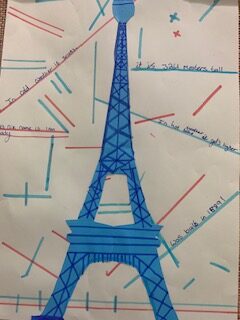

Year 3 Terrace Home and The King’s Guard
ABOUT CINQUE TERRE & SANTORINI CINQUE TERRE, which translates into “five lands” is a group of five island villages, featuring vibrantly coloured homes in northwestern Italy. The landscape of the islands is steep and rugged with rocky cliffs. To be able to build homes on the cliffs along the coastline of the Ligurian Sea, it was necessary to build TERRACES. Terracing means cutting slopes into a series of receding, flat platforms to give a surface for buildings to be built upon. Without buildings on top, terracing resembles steps, with the widest terraced area near the bottom of the slope and the smallest terraced area at the top. SANTORINI is a popular island in Greece that was formed by volcanic eruptions. In Santorini, low cubical buildings made from local stone are built along the rocky cliffs. Many are either white or coloured with volcanic ash.
Mrs Pearson went on holiday and took a photo of terrace homes she saw on her travels…just to further inspire the children.

The children used a range of skills including, drawing, colouring and collage, to created their charming terrace homes. I think they have done a fantastic job – don’t you?

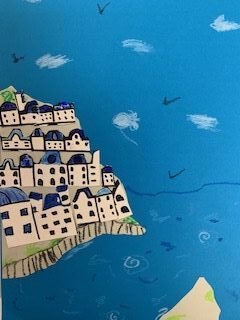




















The KING’S GUARD (also called the Queen’s Guard when the reigning monarch is female) are the military regiments responsible for guarding the royal residences in the UNITED KINGDOM, including Buckingham Palace in London. The usual uniform of a King’s Guard is a red coat and tall bearskin hat.
The children painted their Union Jack background beofre using their drawing and collage skills to create their King’s Guard. As you can see, each one is as unique as the children who created them!




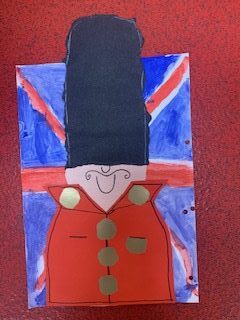










Year 2 FOLK ART FOXES – Throughout EUROPE
Foxes are best known for their large pointed ears and their bushy tails. The word “fox” originated from ancient Indo-European language and means “thick-haired tail.” Foxes live in a vast array of habitats; from temperate forests to the snowy arctic. They are found on every continent except for Antarctica. The red fox is widespread throughout Europe and are found in both the countryside and urban areas.
For this project the children were focusing on shape, pattern and negative space. During the lesson, once we had drawn the fox, we concentrated on mindfulness and listened to calming music while creating our masterpieces.










Year 1 TURF HOUSES – ICELAND
Turf houses are a traditional style of home found in ICELAND. The turf house came about for two reasons: a harsh climate and the lack of available wood for building. Because Iceland was lacking in large trees suitable for building when settlers arrived, they had to get creative with building materials and conserve the timber that they did have. Instead of building the entire home out of wood like their Scandinavian neighbours, they instead made a foundation out of stone, built a wooden frame and then used the abundantly available turf to insulate the homes and even put it on top of the roof! The byproduct of turf homes were naturally insulated homes that offered protection from very cold winters, while also remaining cooler in warmer months. Sometimes the only visible wood was the door of the house, while other times the facade of the home was built with wood.
The children were very brave and only used a Sharpie to draw their houses, so they had to work with any little mishaps that they made. They then carefully coloured them in beofre using their collage skills to add the turf roof and a door that opens to reveal what the inside of the house looks like.
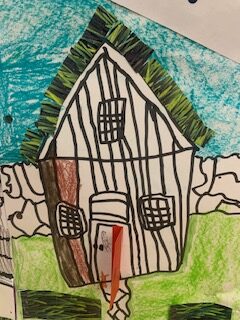


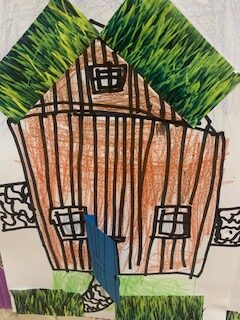
Reception STARRY NIGHT – HOLLAND
Starry Night is an oil-on-canvas painting by the Dutch Post-Impressionist painter Vincent van Gogh. Painted in June 1889, it depicts the view from the east-facing window of his room at Saint-Rémy-de-Provence, just before sunrise, with the addition of an imaginary village.
The children learnt about Van Gogh before working as a Year group to created this stunning collage. Each child had anA4 part of the picture that they coloured using oil and chalk pastels. We then glued each piece together to recreate the whole picture.















The Snowman Year 3
This animation has long been a Christmas favourite, with children and adults alike. The children watched this and then chose a scene to illustrate. I was overwhelmed by their amazing illustrations….and I am sure you will be too. I bet you will find it impossible to chose a favourite!



























Twas the Night Before Christmas Year 5
A Visit from St. Nicholas
‘Twas the night before Christmas, when all through the house
Not a creature was stirring, not even a mouse;
The stockings were hung by the chimney with care,
In hopes that St. Nicholas soon would be there;
The children were nestled all snug in their beds;
While visions of sugar-plums danced in their heads;
And mamma in her ‘kerchief, and I in my cap,
Had just settled our brains for a long winter’s nap,
When out on the lawn there arose such a clatter,
I sprang from my bed to see what was the matter.
Away to the window I flew like a flash,
Tore open the shutters and threw up the sash.
The moon on the breast of the new-fallen snow,
Gave a lustre of midday to objects below,
When what to my wondering eyes did appear,
But a miniature sleigh and eight tiny rein-deer,
With a little old driver so lively and quick,
I knew in a moment he must be St. Nick.
More rapid than eagles his coursers they came,
And he whistled, and shouted, and called them by name:
“Now, Dasher! now, Dancer! now Prancer and Vixen!
On, Comet! on, Cupid! on, Donder and Blitzen!
To the top of the porch! to the top of the wall!
Now dash away! dash away! dash away all!”
As leaves that before the wild hurricane fly,
When they meet with an obstacle, mount to the sky;
So up to the housetop the coursers they flew
With the sleigh full of toys, and St. Nicholas too—
And then, in a twinkling, I heard on the roof
The prancing and pawing of each little hoof.
As I drew in my head, and was turning around,
Down the chimney St. Nicholas came with a bound.
He was dressed all in fur, from his head to his foot,
And his clothes were all tarnished with ashes and soot;
A bundle of toys he had flung on his back,
And he looked like a pedler just opening his pack.
His eyes—how they twinkled! his dimples, how merry!
His cheeks were like roses, his nose like a cherry!
His droll little mouth was drawn up like a bow,
And the beard on his chin was as white as the snow;
The stump of a pipe he held tight in his teeth,
And the smoke, it encircled his head like a wreath;
He had a broad face and a little round belly
That shook when he laughed, like a bowl full of jelly.
He was chubby and plump, a right jolly old elf,
And I laughed when I saw him, in spite of myself;
A wink of his eye and a twist of his head
Soon gave me to know I had nothing to dread;
He spoke not a word, but went straight to his work,
And filled all the stockings; then turned with a jerk,
And laying his finger aside of his nose,
And giving a nod, up the chimney he rose;
He sprang to his sleigh, to his team gave a whistle,
And away they all flew like the down of a thistle.
But I heard him exclaim, ere he drove out of sight—
“Happy Christmas to all, and to all a good night!”
The children read through this iconic Christmas poem before selecting part of it to illustrate. Can you see what part of the poem each illustrator has chosen?




















